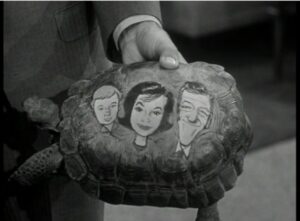 I take it back.
I take it back.
In last week’s column, I wrote that the next time I saw a mama slider turtle making her way up the road to lay eggs in my front yard, I was going to paint the date—real big—on her shell with neon fingernail polish so I could identify her the next time she made the journey. After further research and some mild outrage from a couple of readers, I realized that would absolutely be the wrong thing to do.
Perhaps I’d been harking back to my childhood, when, after heavy rains, box turtles appeared as if by magic in my neighborhood. My brother and I often took them home for pets. We nailed scrap lumber together to make a rickety “turtle hotel’’ and encircled it with scrap wire fencing. We set out water in a foil pie pan and a paper plate filled with brown-at-the-edges iceberg lettuce so our turtles wouldn’t be hungry or thirsty.
Then we named them. Because it was the early 1960s, when TV westerns were all the rage, we tended to choose names from “Gunsmoke” (Matt Dillon, Miss Kitty, Chester, Doc) or “Bonanza” (Ben, Adam, Hoss, Little Joe and occasionally Hop Sing). We painted these names, with the bright red polish our mother used on her toenails during sandal season, on their shells. As Mother Nature would have it, the turtles quickly managed to dig under their wire fence when we weren’t looking and escape to parts unknown.
The only turtle we ever found more than once was Chester, and it didn’t take him long to wise up.
In addition to TV westerns, my family also enjoyed watching “The Dick Van Dyke Show.” In one episode, Rob and Laura hired a maid—sight unseen—because Laura was overwhelmed with housework and taking care of son Ritchie. Unfortunately, Maria lacked basic housekeeping skills. Also, she spoke very little English, had no place to live, and wore a cast on her broken right arm. Only days before she was to be deported back to Barcelona, Maria painted a picture on one of Rob’s neckties and on the shell of Richie’s pet turtle. Problem solved. A novelty shop in New York City hired her to set up in the front window of the store and paint gifts, including turtles, while passersby watched. So she didn’t have to return to Spain after all.
All of that to say it never occurred to me that it’s not okay to paint a turtle’s shell. But thanks to the wonders of the internet, I now know it can harm and perhaps even kill.
How so? For starters, most paints and polishes contain toxic chemicals. When applied to a turtle’s carapace (upper shell), these chemicals can leech through the shell and enter the bloodstream. Paint also interferes with the shedding process, which can cause respiratory distress. Not good. Definitely not good. Paints and polishes also compromise turtles’ ability to absorb UV rays from the sun, which are necessary for good health. That’s one reason pond turtles like to bask on logs. Last but not least, painted turtles lose their camouflage, making them easy targets for predators.
As it turns out, there’s a safer solution, one that’s been used for years by biologists and veterinarians who need to keep track of specific turtles. Their tool is a Markal Paintstik, a long-lasting, highly visible industrial marker that adheres to rough, rusty, dirty or oily surfaces. It’s non-toxic, weather and UV-resistant and made in the good ole USA. Its manufacturer touts it as a tool with the durability of paint and the convenience of a crayon. The markers are available at craft and hardware stores and—no surprise–amazon.
I’ve moved a Markal Paintstik into my online shopping cart, ready for next-day delivery with just one click. Because you never know when the next mama turtle might show up.
(June 3, 2023)